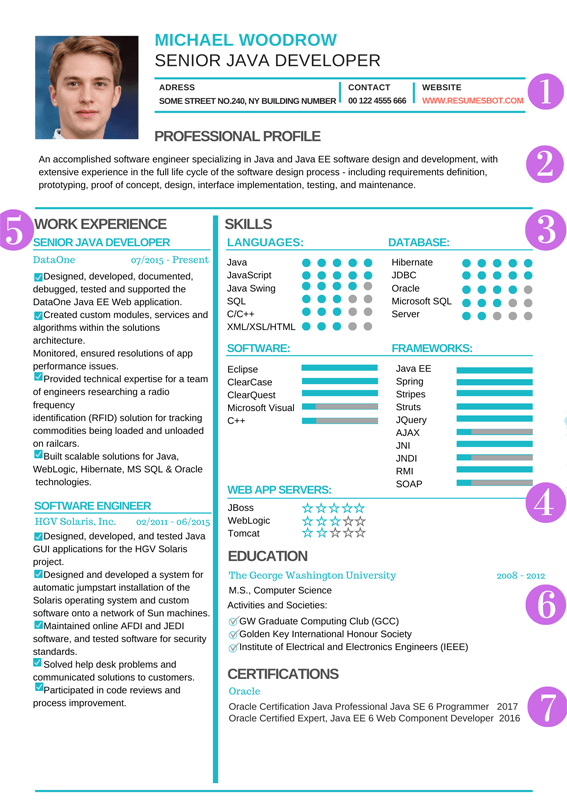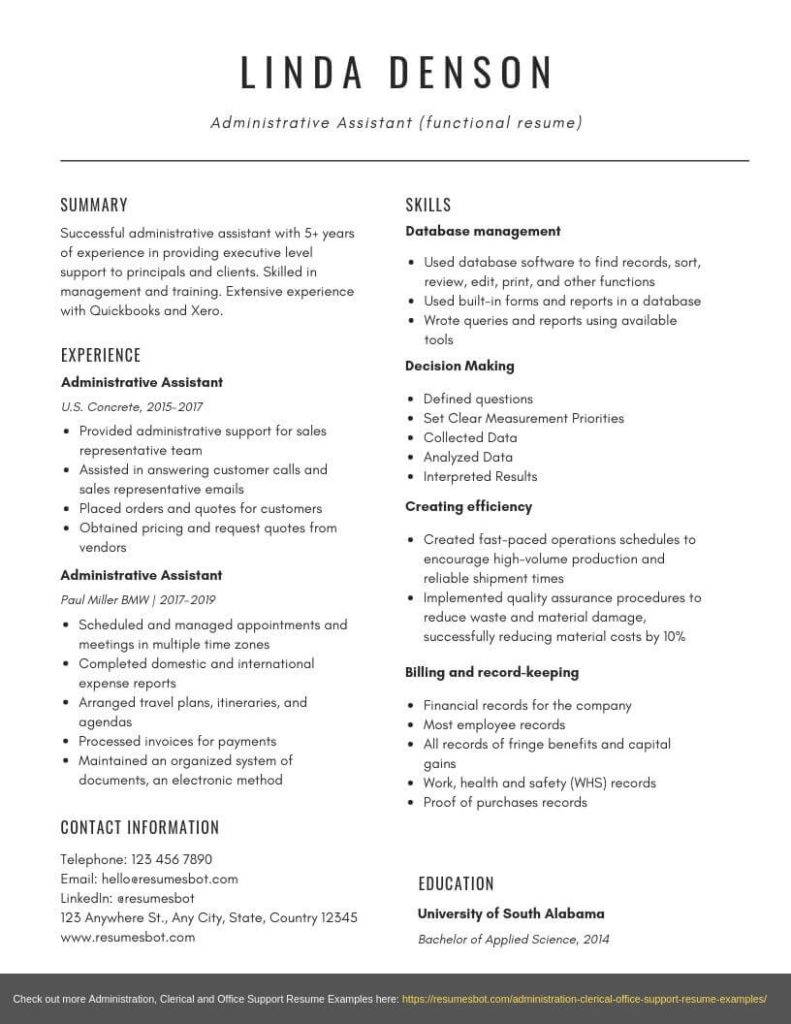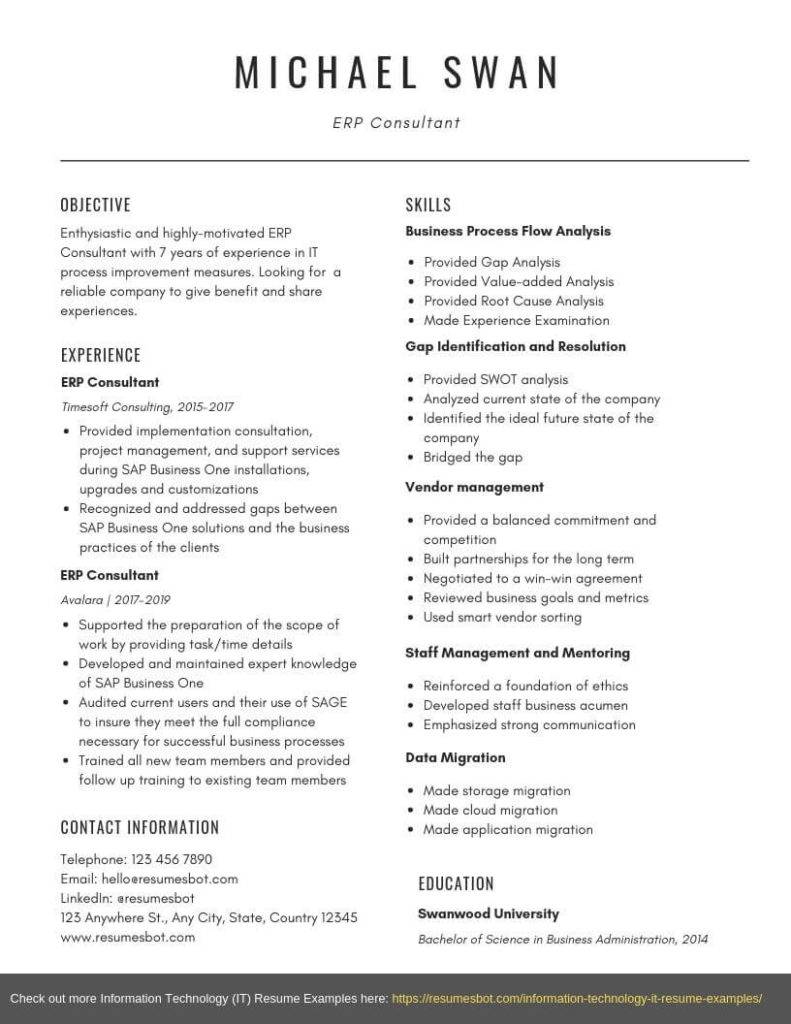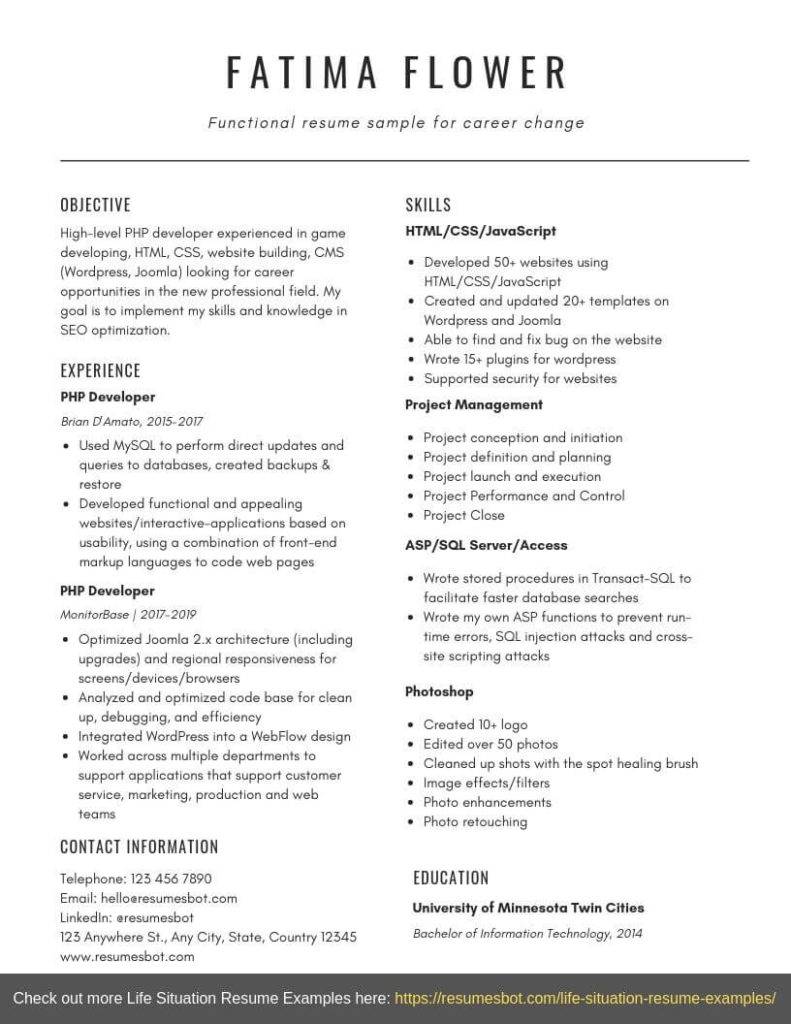Table of Contents
Your resume’s main job is to emphasize your accomplishments, your talents and your professional history. However, to be really effective, your resume must be formatted for maximum impact. When what you have accomplished over your career is more pertinent than where you have worked, a functional resume format is the ideal vehicle to drive that priority home.
What is a Functional Resume Format?
The format for a functional resume orders your data to highlight your skills and accomplishments. It opens with your name and contact information and then specifies your professional title.
It doesn’t matter with functional resume formats if you most recently worked as a waiter. If you have a degree and experience in the study of sea creatures, and you are applying for a related position, your resume should state your professional title as “Marine Biologist.”
Rather than providing a reverse-chronological timeline of your job history, as you would do if using a chronological resume format, in a functional resume, you highlight what you have accomplished thus far in your career. You emphasize the skills you have developed and how they dovetail with the description of the job you are applying for.
When to Use a Functional Resume
Some recruiting/job search professionals state that you should only use a functional resume if you have something to hide. For example, perhaps you took an extended maternity leave that left a gap in your job history.
If you have taken such a hiatus from your career, a functional resume will certainly de-emphasize it. However, this format can also be the best way to capture the attention of an employer for other reasons. If your skills and accomplishments are an exact fit for the job position, a functional format will convey that at first glance.
Given, most employers are curious about where you have worked and for whom. However, that is not always their priority. When your abilities and background really speak to the job opportunity at hand, putting those out there before past job dates and titles is a great way to get noticed.
- The job description emphasizes achievements
- You have worked in a single career-related position so far
- You have a unique skillset that is a good fit for the position
- You held a high-profile position that you want to highlight
- The job description emphasizes past job experience
- You have a consistent, continuous work history
- You want to highlight the high-profile employers you have worked for
- Your work history demonstrates your stability and reliability
When Is a Functional Resume Advantageous?
If you have specialized skills that only a few people in your industry possess, it is important to emphasize this to prospective employers. Also, if you have achieved notable accomplishments in your career field, highlighting those in your resume will garner positive notice. A functional format is the best resume format to communicate your unique, desirable and job-relevant abilities right off the bat.
Free Functional Resume Templates
When you use one of the free templates available online for your functional resume, you can save lots of time while ending up with a professional-looking product that presents you at your best. Most employers don’t have enough time to scrutinize every resume that comes in. If a quick glance reveals a lack of organization and clarity, they are likely to send it to the bottom of the stack.
Your first step is to select a free template that looks attractive and appropriate. Plenty of options are available, from your own Word program to free functional format resume samples online. Look for a template that is simply organized to present a clear snapshot of your qualifications.
Functional Resume Format Examples
When you are looking over free templates, keep in mind that a functional resume sample should include:

How to Write a Functional Resume
You can customize even the most generic functional resume example by making use of a few pro tips:
1. Incorporate the main keywords and phrases in the job description into your resume.
2. Use action verbs within your descriptions.
3. Highlight your most pertinent skills/experience/accomplishments.
1. Contact Information
Your contact information appears at the top of your resume. You should provide your full name, address, phone number and email address. If you have a LinkedIn page, you can include the web address. If you have an online portfolio, add that URL as well.
2. Resume Objective
Your stated career objective should be simply put and to the point. One sentence is all you are likely to need for this section.
3. Skills Summary
One top strategy for your skills section of the resume is to assign a theme to each paragraph. For example, the first might describe your recent accomplishments in your career field. Another paragraph could discuss your professional experience. A third might focus on your management/mentoring skills.
Try to limit yourself to no more than three sentences in each of your four or five paragraphs. Alternatively, you can create bullet-point lists with three or four points beneath each heading.
You want to keep your prospective employer’s attention, so brevity is your watchword. Arrange your information from the most relevant to the job to the least relevant.
4. Additional Skills
If you have skills that don’t directly relate to the job but can be useful in a variety of settings, such as a first aid certification, you can add them below your relevant job skills. List only those that may be useful, and avoid skills that are unrelated to a professional setting, such as stamp collector.
5. Professional Experience
Sometimes people call the functional resume the chrono-functional resume format because it does contain an element of the chronological resume. Just below your skills sections, you can add a synopsis of your work experience that includes past employers, job titles and the dates of your employment in reverse chronological order.
6. Education
Your education section is a snapshot of your academic achievements after completing high school. Don’t forget to list each degree.
7. Additional sections
Add certification you have completed, the name of the institution that issued it and the dates you attended.
Conclusion
Sometimes your work history does not speak for itself, and in those cases, formatting you resume according to your skills and achievements makes sense. Rather than highlighting an unremarkable or incomplete job history, a functional resume showcases the expertise you have developed that is relevant to your career and the assets you offer a new employer. As such, it can make a powerful impact that gets you noticed.
SEE THE RESUMES BOT GUIDE:


